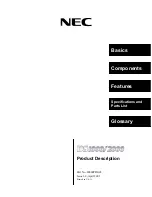
DataVS1
Series
Instruction
Manual
78
14.2.
Machine vision
This is a specific branch of Computer Vision (or "artificial vision").
Computer vision is a generic concept which applies to all processes aimed at extracting information
from images. On the other hand, machine vision has a specific purpose, i.e. control the operation of
equipment and machinery in industrial applications (such as manufacturing lines or good handling
applications).
In order to perform this task, machine vision equipment features stand-alone processing capabilities,
digital inputs and outputs and dedicated peripherals such as photocells and/or a communication
network that allows communication with other similar devices.
In the case of the DataVS1 system, the sensor "view" option allows you to inspect the product to:
Check for missing or incomplete parts
Conduct quality control procedures
Take
measurements
14.3.
General comments on lighting
Lighting conditions are a critical aspect for the vision applications, therefore the settings must be
correct and remain steady during processing.
This section provides some brief information on general lighting conditions, which can easily be found
in the machine vision application.
Keep the light level consistent in the area of interest
The level of light must be as consistent as possible, try to avoid changes caused by external light
sources (environmental illumination, sunlight). The disturbance caused by an external light
source could cause the inspection to fail. The light produced by the internal illuminator may not
be sufficient to eliminate the disturbance caused by other illumination, in this case it will be
necessary to use an even brighter external illuminator or alternatively the area of inspection
should be screened off.
Keep the light level consistent in the area of interest
Make sure that the area of interest receives even lighting, so there are no areas with shadows or
others which are too bright. Also check that the objects are sufficiently illuminated and there is
good contrast with the background. To this purpose, it is recommended to use an external
illuminator when the distance between the sensor and the object to be detected is over 300 mm
as the illuminator fitted on the sensor could be insufficient for longer distances.
Position the lights in the correct position
Position the lights at the right distance from the objects and the sensor. Also check that the light
source brightness is correct so that no areas of the area of interest are saturated.
Lighting in the presence of reflecting surfaces
Experiments have proved that the SVS internal illuminator is not effective when the object has
reflecting surfaces. A reflecting surface can cause saturation in some parts of the area of
interest. In these cases the use of external light sources are highly recommended.
Содержание 959941000
Страница 1: ...Smart Vision Sensor INSTRUCTION MANUAL ...
Страница 3: ......
Страница 78: ...DataVS1 Series Instruction Manual 74 12 OVERALL DIMENSIONS ...







































